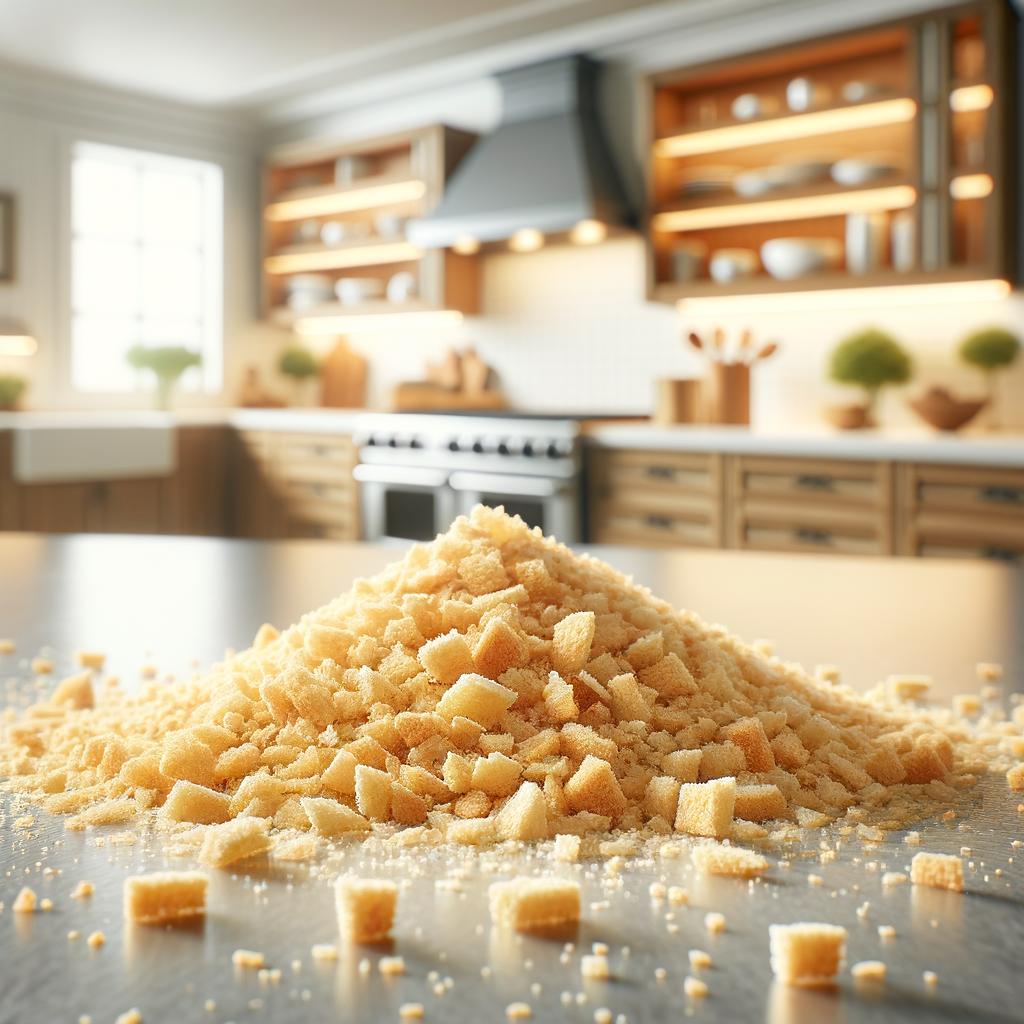Dried Breadcrumbs

Description
Dried breadcrumbs, an unassuming yet versatile ingredient, are made from dry, crumbled bread. They are typically light, crisp, and have a neutral taste, making them a blank canvas for other flavors. Their texture ranges from finely ground to coarsely crushed, providing a delightful crunchiness to various dishes. Unlike fresh breadcrumbs, dried breadcrumbs are less moist and have a longer shelf life. Their unique characteristic lies in their ability to absorb flavors while adding a satisfying crunch, setting them apart from other similar ingredients, such as cracker crumbs or crushed cornflakes.
Primary Uses
Dried breadcrumbs are a culinary chameleon, used widely across global cuisines. They are often used as a binding agent in meatballs and meatloaf, providing structure and moisture. In Italian cuisine, they are a key component in dishes like Eggplant Parmesan, where they create a crispy exterior. They are also used as a topping for gratins and casseroles, adding a crunchy contrast to the creamy interior. Dried breadcrumbs even find their way into sweet dishes, used in recipes like the traditional British Queen of Puddings. Beyond the culinary world, breadcrumbs have been used in theatrical productions as a stand-in for snow!
History
The history of breadcrumbs is intertwined with the history of bread itself, dating back thousands of years. Breadcrumbs were likely first used as a way to utilize stale bread, preventing waste in times when food was scarce. In the Middle Ages, they were used as a thickener for soups and stews. Over time, their use evolved and expanded, with different cultures finding unique applications. In Japan, for example, panko breadcrumbs were developed, a fluffier variety used in dishes like Tonkatsu. There's an old wives' tale that if you scatter breadcrumbs behind you, they can help you find your way home - a story immortalized in the fairy tale "Hansel and Gretel."
Nutritional Information
Dried breadcrumbs are a source of carbohydrates, with a small amount of protein and fiber, depending on the bread used. They also contain trace amounts of iron and calcium. While they are low in fat, they can absorb oil when used in fried foods, which can increase the calorie content of the dish. Compared to similar ingredients, breadcrumbs made from whole grain bread can offer more fiber and nutrients. However, they should be used in moderation as part of a balanced diet, due to their carbohydrate content. As a food historian and nutritionist, I love sharing the tale of this humble ingredient, which has journeyed from a simple way to use up stale bread to a culinary staple in kitchens around the world.

